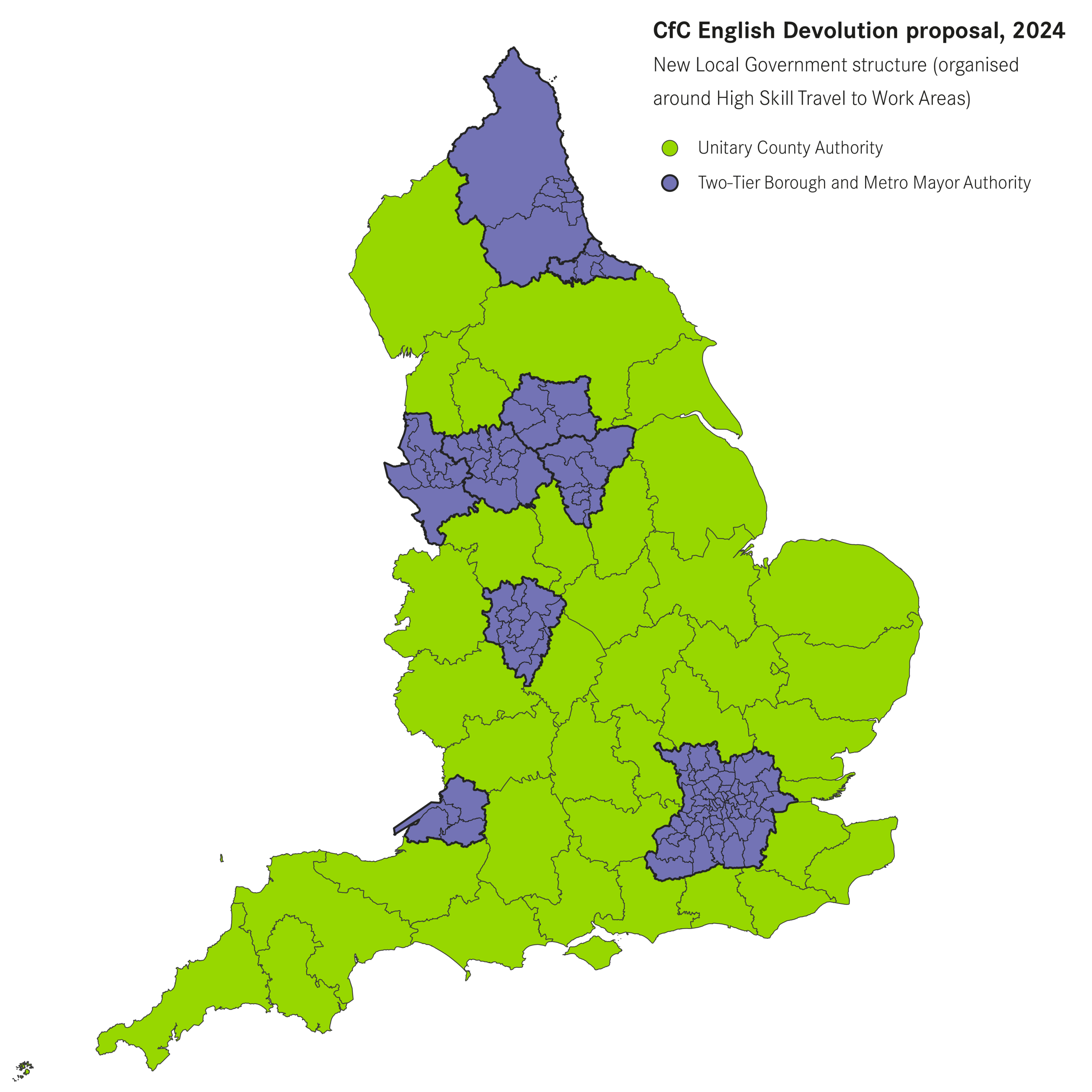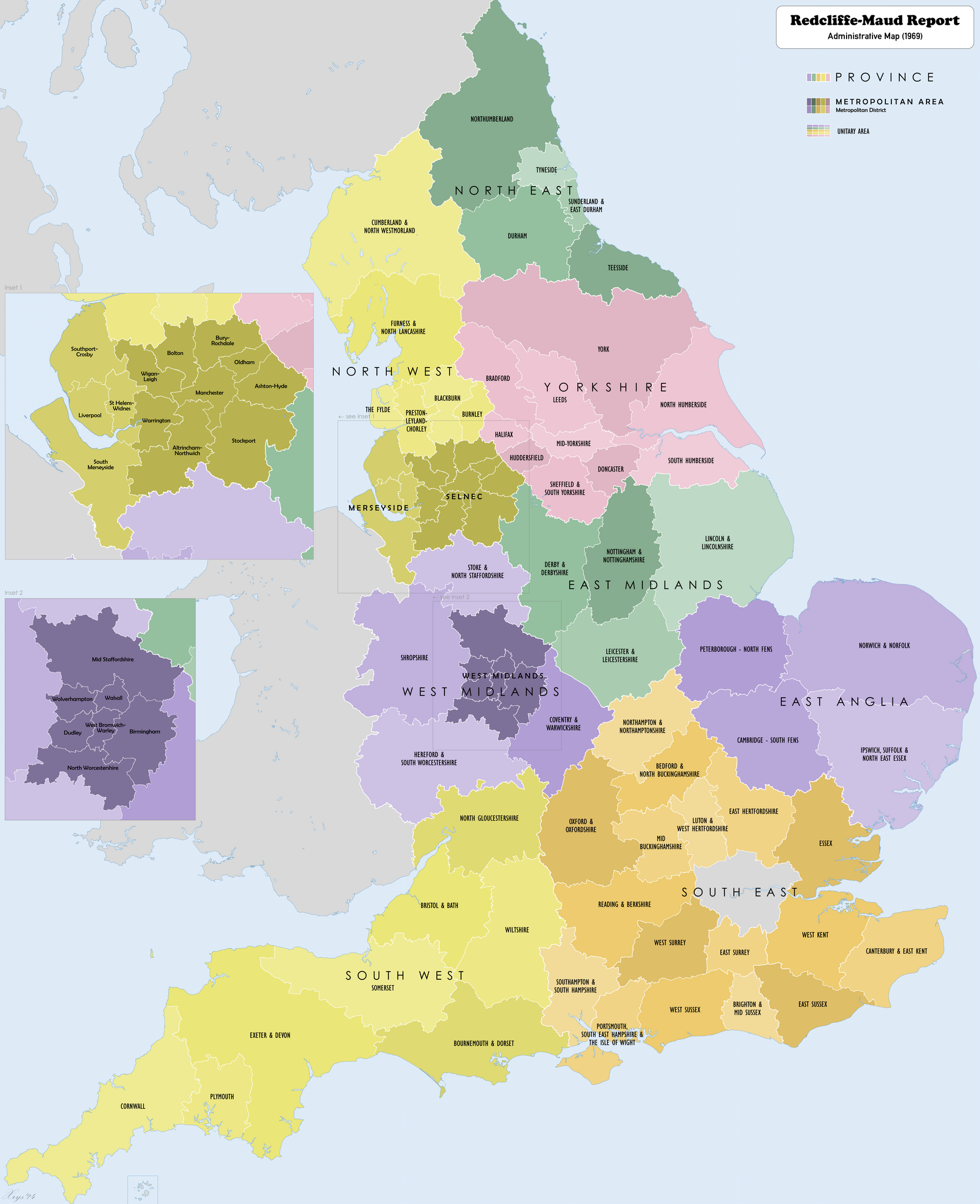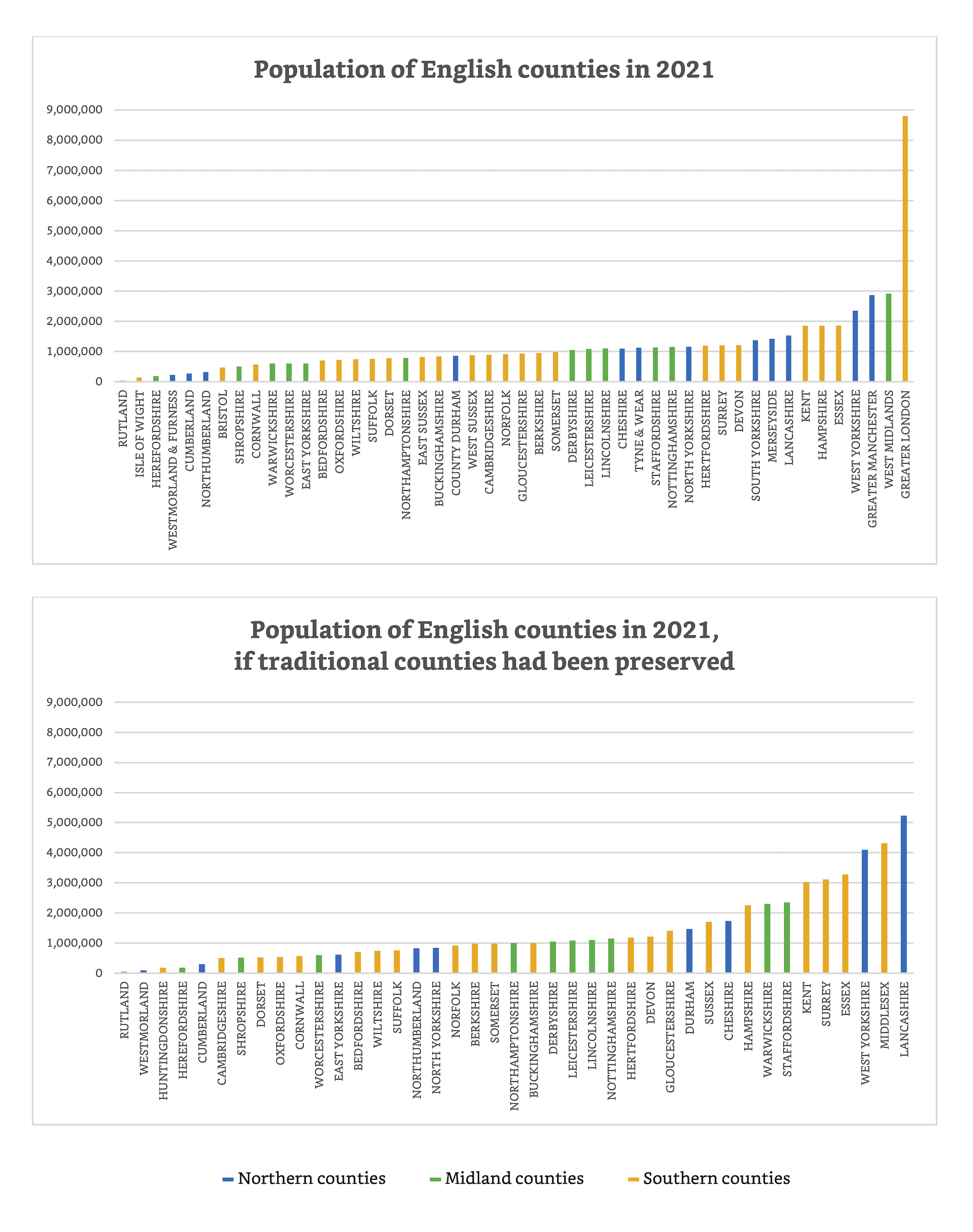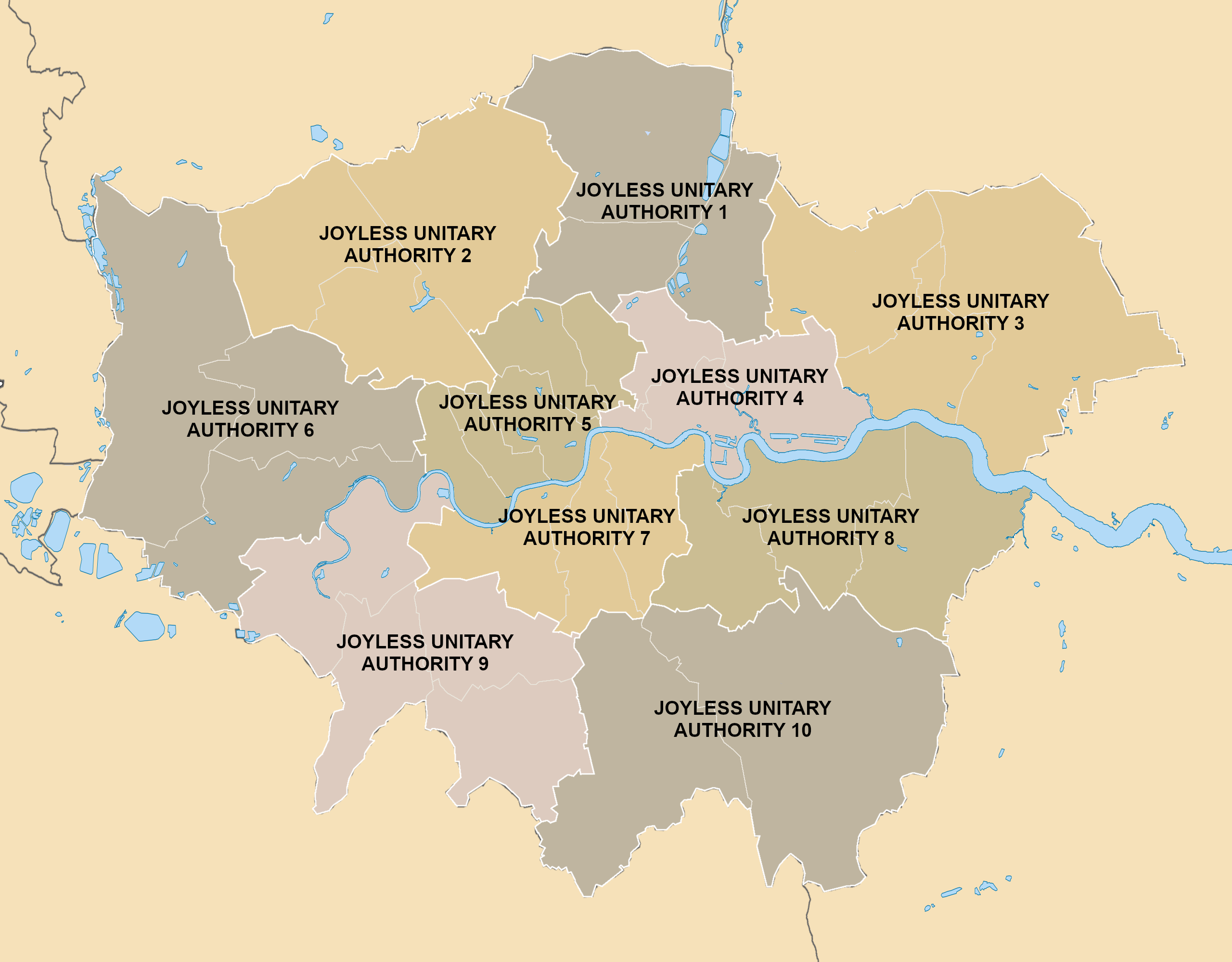Alasdair Gunn is a writer, translator and linguistics researcher.
There’s a local government funding crisis. A crisis! And, like all the other crises right now – the climate crisis, the crisis of extreme-far-turbo-hard-right transphobia – the solution is simple. Burn everything down, and start again.
With that in mind, Sir Keir Starmer’s Labour Party is set to embark upon the largest ever reorganisation of local government in English history. The Dear Leader’s ambitious plans will save billions, thus fixing the foundations of our economy, setting right the ship of state, and verbing various other nouns.
So, what does Labour intend? To suggest that citizens can fund their own Windrush commemorations? To sack Mete Coban, who emits as much carbon as a minor European microstate? Or perhaps struggle by with one fewer night czar – whatever that is?
No. Labour, guided by London’s own Centre for Cities, instead plans to replace almost the entire county system. If the Centre for Cities’ report is an indication of what’s coming, barely a shire will go unmolested. Those which are not merged may well be scrapped altogether, and any county caught shirking will be mercilessly bisected.
Enter the unitary authority, a concept so devoid of whimsy that one can easily imagine Starmer whispering it into the ear of his favourite voice coach. Counties will be replaced by unitary authorities: district-less macrozones with neither charm nor history, parcelling out the populus into easily digestible devo-chunks.
The madness of this move is difficult to comprehend. It’s like watching a man jump up and down upon a molehill, thinking there will be less molehill as a result. ‘Less government!’ you might think; but you’d be wrong. Local oversight can prevent waste, with lower-tier rural councils less likely to splurge on unwanted schemes than their higher-tier counterparts. Fewer governments do not less government make.
So, with apologies to Emily Maitlis, let’s take a forensic look at the Centre for Cities’ plans.

Although some of the unitary authorities it proposes are already in situ (the districts of North Yorkshire, for example, were rationalised away by the last government’s molehill-stomping), most are entirely new. Under this schema, any districts they once contained will be eliminated, despite the UK already having unusually large local authorities by European standards.
In some cases, the proposed new councils will be grindingly familiar, having already been introduced, hated, then abolished in previous decades. The near-universally derided Hereford and Worcester is set to make a comeback, as is the equally unlovable Avon. Names, of course, will be changed: for instance, Avon is now ‘the West of England’, despite the fact that Gloucestershire – to its north – is still supposedly in the Southwest.
But, with or without rebadging, the spirit of the Seventies lives on: a scowling suspicion that the English, by retaining their traditions, are somehow getting away with something. Therefore, in line with Starmer’s diktat that local authorities may not fall below the half-a-million-people threshold, Devonians will need to schlepp a two-and-a-half-hour round trip across the Devonshire moorlands to access council services.
Those well-versed in the nerdology of British local government will spot a familiar tactic: the technocratic tweaking of borders, familiar from the ill-fated Redcliffe-Maud Report.

Now, as then, Hampshire gets decapitated, its severed head stitched to Berkshire’s backside; now, as then, stubbornly rural south Cheshire gets welded to a rump Staffordshire.
Decent people will be fine with this, because decent people understand how discerning £22bn black holes are when it comes to what they consume. Decent people will also think it gauche to mention that the un-devolved areas of England have so far been excluded from Starmer’s Council of the Nations and Regions. (Hysterically, this turns out to be 52 per cent of England. Yup: 52 per cent.)
But what of the counties which survive the cull? Well, these are where Diverse Members of Our Valued Communities live. And, at the risk of inviting the ire of the Home Office, these parts of the country seem to be in a different tier altogether.
Despite having almost exactly the same population as New York City, which makes do with five boroughs, Greater London will retain all 33 of its vital subdivisions – including the City of London, whose population is barely 10,000. Not a single London borough meets Starmer’s plucked-from-thin-air population threshold; yet, unlike the districts of Lincolnshire and Leicestershire and Lancashire and dozens and dozens of others, each and every one of Greater London’s boroughs is permitted to remain.
Centre for Cities has determined that it would be too burdensome for Islington-dwellers to walk to Camden (the horror!) in order to visit their local council offices. Cruelly denied the comprehensive tube, train, tram and bus network so lavishly bestowed on everyone else in England, Londoners naturally require special treatment. It is a happy coincidence that the capital city is a Labour stronghold; equally happy is the coincidence that all of this is being done without local referenda. (Once upon a time, we called these “People’s Votes”.)
This brainchild, unfortunately, is no orphan. In fact, it is the latest – and most savage – in a long lineage of similar socialist spawn. And it is worth taking a moment to consider the great sweep of these leftist reforms, and what they mean for the democratic representation of the people of England.

As my graph above shows, the populations of England’s modern counties, when plotted, form a hockey stick, with Greater London as its blade. Yet, were today’s counties unchanged from their ancient predecessors, large and small counties would proliferate up and down the country, balancing power and influence between North and South.
Even without Labour’s latest gambit, English counties are wildly imbalanced – with all that implies for political representation. Woe betide the prime minister whose plans irk the all-powerful mayor of London; but if Mayor Whatshisname from Bumpkinshire opposes Westminster’s latest undertaking, it’s doubtful that anyone will notice.
And the hockey stick is about to get a whole lot flatter. As the proposed London City Region (shudder) rockets upwards in population, the remaining shire counties – whose councils date back as far as 1888 – will be shattered into even tinier fragments. If these reforms go through, provincial England will be almost entirely without a voice in local government.
It is difficult to know whether this is clumsiness or vindictiveness on Starmer’s part, largely because it’s not entirely clear whether the man experiences normal emotions. But if it is the latter, consider what an equally vindictive countermeasure might look like. As a thought experiment, I divided Greater London up into ten equally sized unitary authorities. I wonder how this would go down with the chattering classes.

Vindictive countermeasures aside, Starmer will get probably get his way. Yet jumping up and down on the molehill of England’s administrative hierarchy will only muddy the PM’s shoes. And, in the long run, I’d sooner bet on the bloody-mindedness of Rutlanders than the utopian doodles of the Centre for Cities.


![NYC Tourist Helicopter Falls into Hudson River, Siemens Executive and Family Among Those Killed [WATCH]](https://www.right2024.com/wp-content/uploads/2025/04/NYC-Tourist-Helicopter-Falls-into-Hudson-River-Siemens-Executive-and-350x250.jpg)






![Green Day’s Cringe Trump Diss Ends in Fire and Evacuation [WATCH]](https://www.right2024.com/wp-content/uploads/2025/04/Green-Days-Cringe-Trump-Diss-Ends-in-Fire-and-Evacuation-350x250.jpg)
![Red Sox Fan Makes the ‘Catch of the Day’ with Unconventional ‘Glove’ [WATCH]](https://www.right2024.com/wp-content/uploads/2025/04/Red-Sox-Fan-Makes-the-‘Catch-of-the-Day-with-350x250.jpg)






